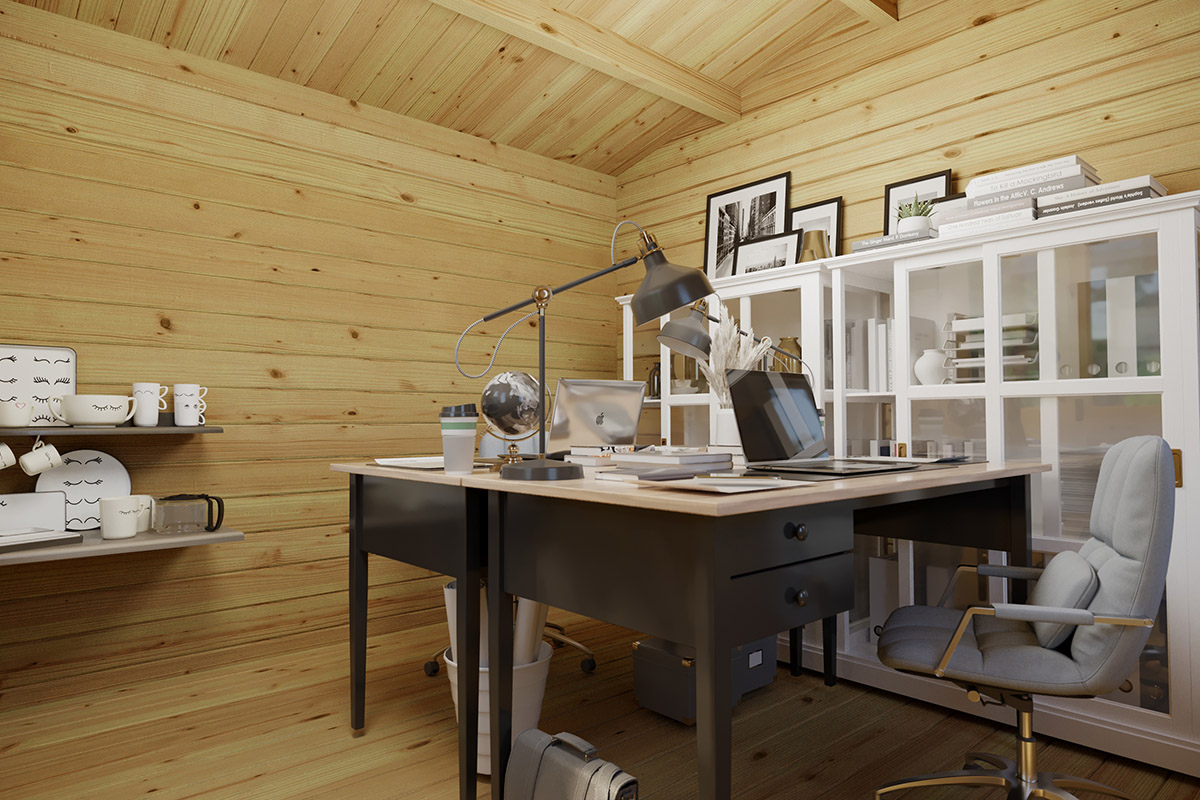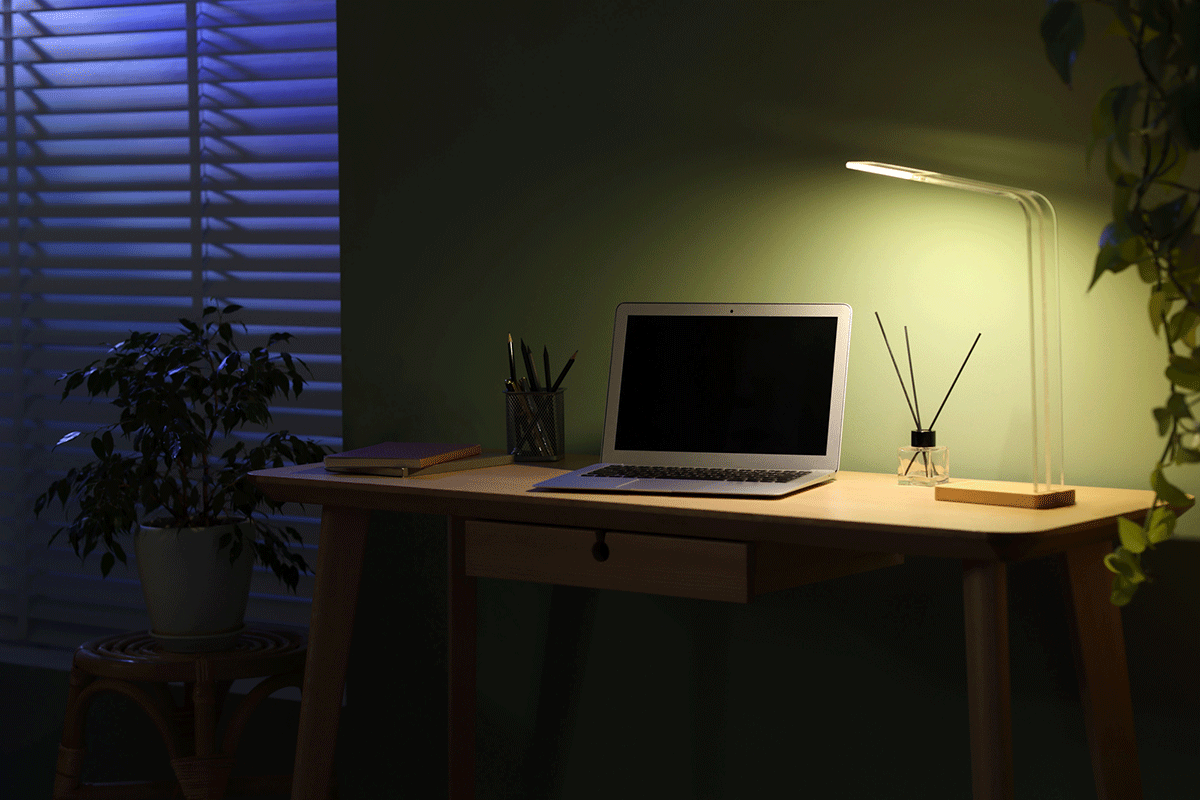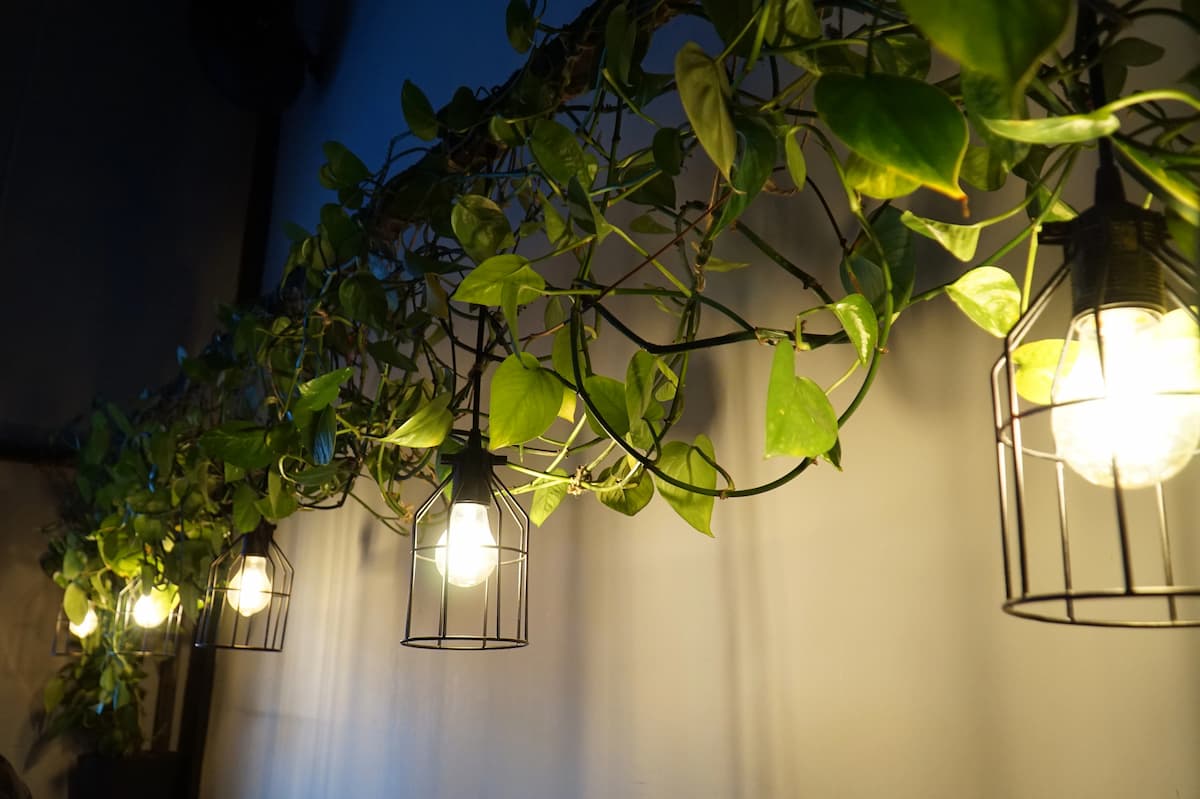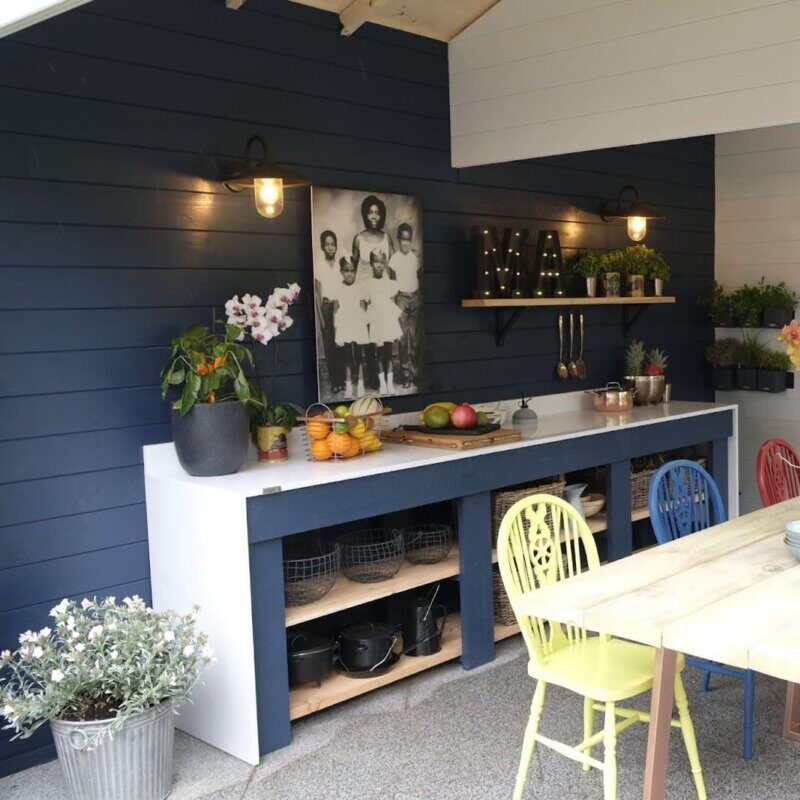
Whether your garden room serves as a home office, gym, entertainment space, or peaceful hideaway, the right lighting can turn it from a simple outbuilding into a space you’ll genuinely love spending time in.
Poor lighting makes any room feel flat and uninspiring, but the right setup can transform it into a cozy, practical space that feels warm and inviting all year round – from dark winter mornings to long, golden summer evenings.
The challenge is that garden rooms don’t behave like traditional indoor spaces. Their glass walls, varied light levels, and multi-use layouts call for thoughtful planning and clever design.
In this guide, we’ll walk you through everything you need to know – from practical tips and efficient lighting solutions to modern trends and installation advice – so you can create a lighting plan that fits your space, lifestyle, and budget perfectly.
Lighting a garden room isn’t quite the same as lighting your main home. The very features that make these buildings beautiful – large windows, open layouts, and vaulted ceilings – also make them a little trickier to illuminate evenly.
Sunlight can flood in through the windows at midday but disappear completely by early evening. Without proper planning, that can leave your space feeling inconsistent throughout the day.
Most garden rooms are also designed to serve more than one purpose. You might want bright, energising light for morning workouts, crisp illumination for video calls in the afternoon, and soft, ambient light for unwinding in the evening. A single ceiling fitting won’t achieve all of that – layered lighting is the secret.
Seasonal changes add another layer to think about. Summer calls for subtle light that complements the natural glow of late sunsets, while winter demands stronger artificial lighting to balance out the shorter days.
And finally, remember that materials matter. Wooden cladding, glass, and metal fixtures all reflect and absorb light differently. Understanding how your finishes behave helps you design a lighting plan that feels natural and cohesive.

The best lighting schemes are built in layers. Each type of lighting plays a unique role, and a well-balanced setup typically includes at least three of these four:
This is your general illumination – the base layer that lights the entire room. Recessed spotlights, LED panels, or dimmable pendants all work well here. In garden rooms, dimmable LEDs are especially practical because they let you adjust brightness to suit any mood or task.
Task lighting is focused and functional, designed for specific activities such as reading, crafting, or working. Think desk lamps, under-shelf lighting, or adjustable spotlights. Always position these carefully to avoid glare on reflective surfaces like screens or glass tables.
Accent lighting adds character and depth by highlighting architectural details, plants, or artwork. LED strips, wall washers, or picture lights can help create a dynamic space that feels more visually interesting.
These are your statement pieces – pendants, chandeliers, or sculptural lamps that bring personality and charm. In a garden room, decorative lighting can even serve as an eye-catching feature visible from your house or garden.
Every garden room has its own personality, so your lighting should match how you use the space.
Combine bright ambient lighting with a good-quality desk lamp. Opt for cooler white light (around 4000K–5000K) to stay focused, and make sure your setup flatters you on video calls without creating glare.
Go for bright, invigorating light (5000K–6500K) to keep your energy up. Linear LED panels or ceiling strips work brilliantly here. Adding motion sensors can also make your setup more convenient and energy-efficient.
Here, flexibility is key. Choose dimmable systems that can shift from lively and bright to soft and atmospheric in seconds. Pendant lights over a dining table combined with subtle LED strip lighting create a great mix of function and mood.
For a calm, cozy feel, layer soft lighting sources such as table lamps, floor lamps, and wall sconces. Warm light below 3000K creates a soothing atmosphere that’s perfect for winding down.
Some lighting options have become firm favourites among garden room owners for good reason:

Lighting trends in 2025 are all about combining technology, sustainability, and wellbeing.
If you use your garden room as an art studio or creative space, look for LEDs with a high colour rendering index (CRI 90+) for accurate, true-to-life tones.
Modern garden room lighting should strike a balance between efficiency, comfort, and environmental responsibility.
LEDs remain the best all-round choice – they’re bright, long-lasting, and cool-running, which is especially useful in insulated spaces that tend to retain heat. Pairing them with dimmer switches helps you fine-tune the brightness while saving energy.
Solar-powered lights or lanterns are another excellent addition for evenings outdoors. They cost nothing to run and bring a magical, eco-friendly glow to your space.
While lighting can completely transform your garden room, it’s also important to get the practical side right.
Unless you’re only using plug-in lamps or battery-powered lights, it’s best to hire a professional. This ensures your installation meets safety standards and insurance requirements.
You don’t have to spend a fortune to get great lighting results. Try these simple yet effective ideas:
Avoid relying on just one central light source. A mix of light levels and directions makes your garden room more comfortable and adaptable.
As a rule of thumb, aim for 20–30 lumens per square foot for general use, 50+ for detailed work, and always include dimmers for easy adjustment. Mixing warm and cool tones adds extra depth and balance.
What’s the best lighting for a garden room?
Layered lighting works best – combine ambient LEDs, focused task lighting, and accent lights for atmosphere. Dimmable ceiling lights paired with a quality desk or floor lamp give you flexibility for any activity.
What’s the latest lighting trend?
Human-centric or circadian lighting is leading the way. These systems shift in tone throughout the day to support your natural body rhythm. Combined with smart controls and biophilic design, they create lighting that’s both beautiful and beneficial.
What are the four main types of lighting?
A good design usually includes at least three of these four layers.

The right lighting plan can completely redefine your garden room, making it comfortable, inviting, and functional day or night.
Think ahead, plan for flexibility, and embrace modern, energy-efficient technology that works with your space rather than against it. If you’re unsure about wiring or installation, always get professional advice.
With thoughtful design and the right mix of fixtures, your garden room will become a welcoming, practical extension of your home that looks beautiful in every season.